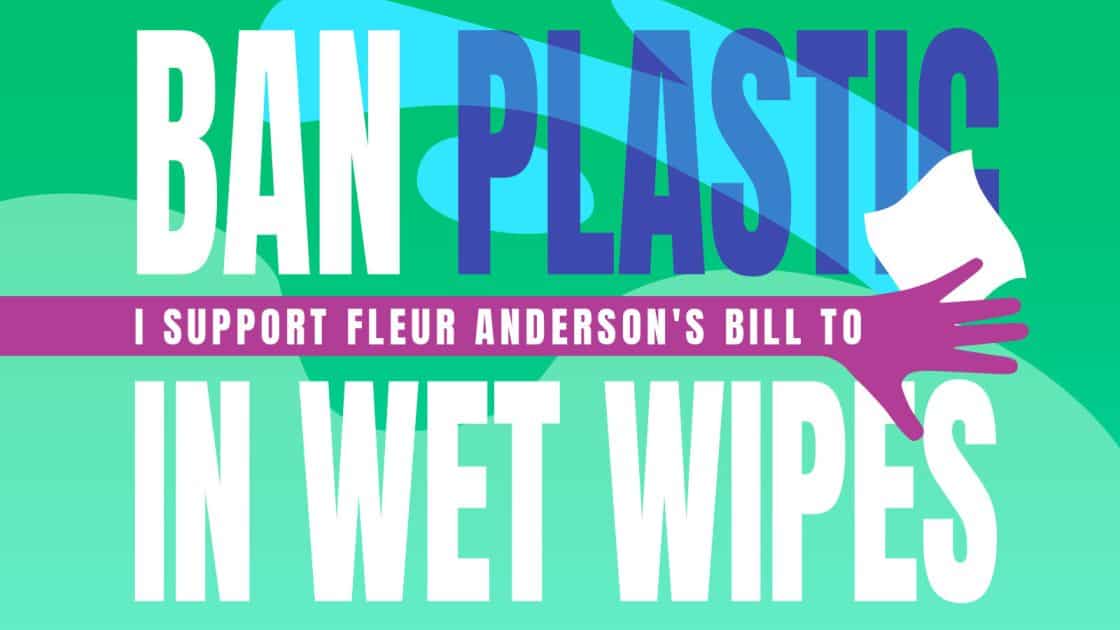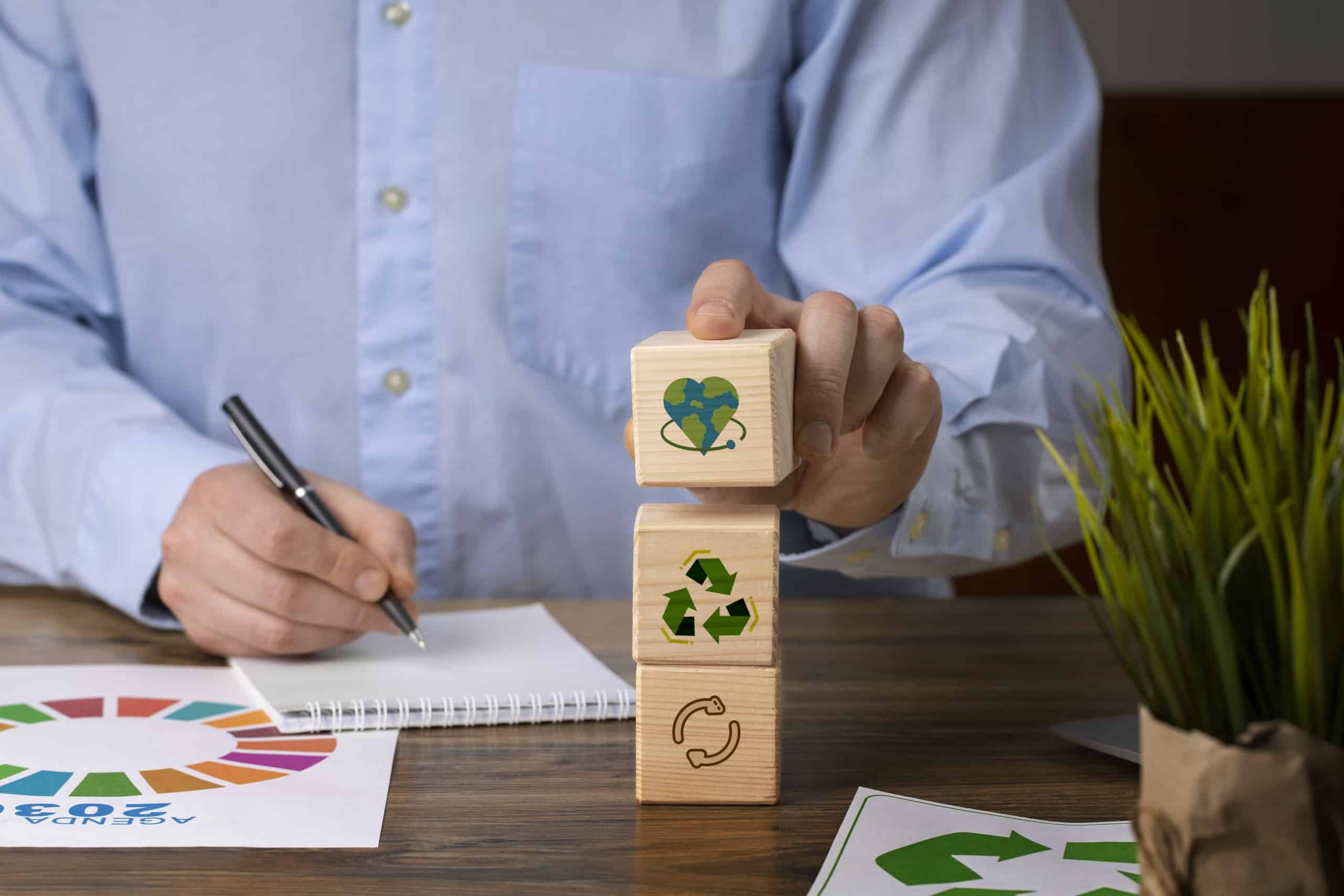The Growing Demand for Sustainable Wet Wipes
Consumer behavior has seen a notable change in recent years, with a greater emphasis on making ecologically conscious decisions. This shift is motivated by a rising consciousness of the ecological consequences of common goods and a deepening dedication to sustainability. Wet wipes, commonly used in households for personal hygiene, baby care, and cleaning, are being closely examined due to their impact on the environment. Consequently, there has been a significant increase in the demand for environmentally friendly wet wipes, driven by various influential factors.
Ecological Consciousness
Consumers are gaining a greater understanding of the environmental concerns linked to conventional wet wipes. These wipes frequently consist of synthetic fibers such as polyester and polypropylene, which have a low rate of biodegradation in the environment. Once discarded, they can endure for extended periods in landfills or contribute to the contamination of marine ecosystems. The visual and ecological consequences of such trash have led to a demand for alternatives that reduce damage to the world.
Regulatory Pressures
Global governments and regulatory authorities are addressing the environmental challenge by implementing more stringent laws on single-use plastics and non-biodegradable items. An example of this is the Single-Use Plastics Directive implemented by the European Union, which has the objective of mitigating the environmental consequences caused by some plastic items, such as wet wipes. The implementation of these restrictions is compelling firms to engage in innovation and develop sustainable alternatives that adhere to newly established laws and standards.
Consumer Health and Safety
In addition to environmental issues, there is an increasing recognition of the potential health hazards linked to synthetic materials and chemical additives included in conventional wet wipes. Consumers are progressively searching for products crafted from natural, non-toxic components that are conducive to their skin and general well-being. Health-conscious shoppers are attracted to biodegradable and compostable wipes, which are often manufactured using plant-based fibers and do not contain toxic chemicals.
Corporate Responsibility and Brand Image
Enterprises are acknowledging the significance of sustainability in constructing and upholding their brand reputation. Companies that commit to environmentally friendly activities and goods can improve their reputation and attract a dedicated consumer base. Wet wipes manufacturers may showcase their dedication to environmental stewardship and social responsibility by providing wet wipes that are both biodegradable and compostable.
Advancements in Technology and Innovation
Progress in the field of materials science and industrial technologies is enabling the production of wet wipes that are both of superior quality and environmentally friendly. The advancements in processing natural fibers, manufacturing nonwoven fabrics, and developing environmentally-friendly packaging are allowing the development of wipes that satisfy customer demands and meet ecological criteria. These technical advancements are essential for increasing the production of environmentally friendly wet wipes to keep up with the increasing demand.
Potential Areas for Business Growth and Development in the Market
The sustainable products market is expanding tremendously, offering substantial growth and distinction prospects. Businesses that allocate resources towards the advancement and promotion of ecologically sustainable wet wipes have the opportunity to access a very profitable market of environmentally aware customers. This transition also creates opportunities for collaboration with other sectors, like personal care, healthcare, and hospitality, which are placing a growing emphasis on sustainability in their activities and offerings.
The increasing need for eco-friendly wet wipes is indicative of a wider cultural trend towards environmental accountability and a focus on personal well-being. The market for biodegradable and compostable wet wipes is expected to experience substantial development as consumers, regulators, and businesses increasingly prioritize eco-friendly options. Wet wipes manufacturers may have a significant impact on promoting sustainability and innovation in the industry by comprehending and addressing these requirements. This, in turn, will contribute to the betterment of the earth and society as a whole.
Understanding Biodegradable and Compostable Materials
When striving for sustainability, it is crucial to comprehend the distinctions between biodegradable and compostable materials, particularly when creating environmentally friendly items such as wet wipes. Both terms are frequently used interchangeably, however, they pertain to separate procedures and outcomes. This section examines the attributes, advantages, and factors to consider when using biodegradable and compostable materials.
Biodegradable materials refer to substances that can be decomposed by microorganisms, including bacteria, fungi, and algae, into natural components such as water, carbon dioxide, and biomass. This process occurs spontaneously and does not necessitate human intervention, although it can be expedited under some environmental circumstances.
Distinctive Attributes:
- Natural Decomposition: Natural decomposition refers to the process by which biodegradable materials break down due to the activity of microorganisms that exist naturally.
- Environmental Impact: The process of decomposition produces benign by-products, hence mitigating pollution and waste.
- Timeframe: The speed at which a substance breaks down naturally can vary greatly depending on the substance itself and the conditions of the environment. For instance, many types of biodegradable plastics may require several months to undergo decomposition, but organic substances such as food waste can disintegrate within a few weeks.
Common Biodegradable Materials:
- Plant-Based Fibers: Plant-based fibers, such as cellulose, cotton, and bamboo, have a high degree of biodegradability. They rapidly disintegrate and provide nutrients in the soil.
- Biodegradable Plastics: Biodegradable plastics, such as polylactic acid (PLA) and polyhydroxyalkanoates (PHA), are specifically engineered to decompose at a faster rate compared to conventional plastics.
Compostable materials are substances that can be broken down and decomposed into organic matter through the process of composting. Compostable materials are a specific category of biodegradable materials that undergo decomposition into natural components and generate compost, a fertile substance resembling soil that improves soil fertility. Composting necessitates precise conditions, such as the optimal combination of moisture, temperature, and oxygen, which are often attained in industrial composting facilities.
Distinctive Attributes:
- Composting Conditions: Compostable materials necessitate regulated conditions to effectively decompose. Industrial composting facilities offer the ideal conditions for fast decomposition.
- Beneficial Byproduct: Composting yields humus, a nutrient-dense substance that enhances soil fertility, fosters plant development, and enhances overall soil well-being.
- Certification Standards: Compostable materials must adhere to precise criteria to guarantee their complete and safe decomposition. ASTM D6400 is the accepted standard for compostability in the United States, while EN 13432 is the recognized norm in Europe.
Typical Compostable Materials:
- Natural Fibers: Natural fibers such as cellulose, bamboo, and cotton share similarities with biodegradable materials in that they can also be composted.
- Compostable Plastics: Compostable plastics, such as PLA, can undergo decomposition in specific circumstances.
Advantages of Biodegradable and Compostable Materials
- Environmental Sustainability: Environmental sustainability is achieved by using both biodegradable and compostable materials, which helps to reduce the dependence on fossil fuels and minimize the amount of trash that is disposed of in landfills. They assist in reducing pollution and promoting a circular economy, in which products are intentionally designed for reuse, recycling, or natural decomposition.
- Soil Health: Compostable materials have the advantage of enhancing soil health by supplementing it with organic matter, hence improving soil structure, fertility, and water retention. This promotes sustainable agriculture and minimizes the need for chemical fertilizers.
- Consumer Safety: Natural, biodegradable, and compostable materials are typically devoid of noxious chemicals and additives commonly present in synthetic items, hence enhancing their safety for human utilization and minimizing the risk of exposure to dangerous compounds.
Factors to Take into Account When Utilizing Biodegradable and Compostable Materials
- Decomposition Environment: The efficacy of biodegradation and composting is contingent upon environmental conditions. Biodegradable materials may undergo a slower decomposition process in environments with low levels of oxygen, such as landfills. Compostable materials necessitate the presence of particular conditions that are exclusively available in industrial composting facilities.
- Product Design: The integration of biodegradable and compostable materials into goods such as wet wipes necessitates meticulous evaluation of material characteristics. Natural fibers and synthetic fibers differ in absorbency, strength, and texture, which can affect the performance of the product.
- Verification and Conformity: It is essential to ensure that materials adhere to established criteria for biodegradability and compostability to uphold product excellence and instill confidence in consumers. Certification ensures that the materials will disintegrate safely and efficiently.
Gaining a comprehensive understanding of the distinctions and uses of biodegradable and compostable materials is crucial for the development of environmentally friendly goods. Wet wipes manufacturers can utilize these materials to produce environmentally friendly wet wipes that meet consumer expectations and comply with regulatory standards, while also promoting a more sustainable globe. Adopting biodegradable and compostable materials is a crucial measure in minimizing the environmental footprint and advancing sustainability in common consumer goods.
Optimizing Wet Wipe Machines for Eco-Friendly Production
The process of shifting towards the production of biodegradable and compostable wet wipes requires careful consideration of both the appropriate materials and the optimization of the machinery utilized in their manufacturing. Current wet wipe production equipment frequently necessitates substantial adaptations to efficiently process environmentally friendly materials. This section examines the essential machine requirements and process improvements needed to enhance the efficiency of wet wipe machines for sustainable manufacturing.
Essential Machine Specifications
- Fiber Compatibility: To handle biodegradable and compostable materials, wet wipes machines need to be able to process natural fibers, which might behave and have characteristics that are quite different from synthetic fibers. Important factors to consider are:
- Cutting and Folding: When working with natural fibers such as cellulose, cotton, and bamboo, it is important to use certain cutting techniques to get accurate and neat cuts without causing the threads to unravel.
- Layering Techniques: Wet wipes machines need to be modified to accommodate the distinctive layering characteristics of natural fibers, guaranteeing uniform distribution and uniformity in the end result.
- Moisture Management: Biodegradable materials exhibit distinct moisture absorption and retention properties compared to synthetic fibers. Effective moisture management is essential for preserving the integrity and efficacy of the wipes.
- Wetting Process: The wetting process requires machines to have precise control to apply the appropriate amount of liquid accurately. This ensures that the wipes maintain an optimal moisture level, preventing them from being excessively dry or saturated, which could negatively impact their effectiveness and longevity.
- Moisture Retention: To ensure that the wipes maintain moisture without deteriorating prematurely, it is necessary to make modifications to the composition of the wetting solution and the timing of its application.
- Sealing and Packaging: Conventional plastic packaging is not appropriate for compostable wipes. Wet wipes machines must adjust to accommodate sustainable packaging alternatives.
-
- Biodegradable Films: Biodegradable films require wet wipes machines that are specifically designed to handle their unique sealing qualities, which can differ from those of normal plastics.
- Compostable Adhesives: Compostable adhesives are crucial for maintaining the overall sustainability of a product by ensuring that the adhesives used in the packaging process can be composted and are compatible with biodegradable films.
- Nonwoven Fabric Production: Modifying existing technology is necessary to produce nonwoven fabrics from natural fibers.
- Hydroentangling: Hydroentangling is a method that involves using powerful water jets to interlock fibers. It is necessary to fine-tune this process for natural materials to produce robust and long-lasting fabric while also maintaining its capacity to break down naturally.
- Thermal Bonding: Thermal bonding is a technique that can be employed to produce robust and long-lasting fabrics from certain biodegradable materials. It is necessary to calibrate machines to attain the optimal equilibrium between durability and the ability to decompose naturally.
Modifications to the Process
- Procurement of raw materials: An uninterrupted flow of sustainable materials is essential for a dependable supply chain. This involves procuring certified organic cotton, bamboo, or other natural fibers that adhere to environmental criteria.
- Supplier Collaboration: Establishing strong ties with suppliers capable of consistently delivering high-quality materials is crucial for ensuring optimal production efficiency and product quality.
- Verification of Certification: Guaranteeing that acquired materials possess certification for biodegradability and compostability aids in fulfilling regulatory mandates and meeting consumer anticipations.
- Production Line Modifications: Current production lines may require reconfiguration to accept novel materials and processes.
- Tension Control: Processing natural fibers may necessitate adjusting tension settings to avoid tearing or straining.
- Cutting Mechanisms: Optimizing cutting mechanisms to accommodate the distinctive characteristics of natural fibers guarantees accurate and meticulous cuts, minimizing wastage and enhancing the quality of the final product.
- Moisture Application: It is essential to adjust the wetting stations to properly distribute the appropriate amount of liquid on the wipes to preserve their efficacy and longevity.
- Assurance of Quality: The process of ensuring the quality and integrity of biodegradable wipes entails thorough testing and continuous monitoring at every stage of production.
- Durability Testing: Performing tests to verify that biodegradable wipes retain their structural integrity and operational effectiveness throughout their specified lifespan.
- Biodegradability Testing: This involves confirming the decomposition of the wipes as intended in several environmental settings, including both household composting systems and industrial composting facilities.
- Adoption of Sustainable Packaging: The process of shifting towards compostable packaging entails the creation and examination of novel materials that fulfill the criteria of being long-lasting and suitable for storage.
- Material Testing: Verifying that biodegradable films and compostable adhesives meet the required performance criteria for packaging.
- Packaging Design: Creating packaging that is both environmentally friendly and practical, while also visually attractive to customers.
Education and Execution
- Employee Training: It is crucial to provide training to the production workers regarding the new materials and machinery adjustments to ensure a seamless transition.
- Operational Training: Providing operators with instruction on the precise criteria and modifications necessary for managing biodegradable and compostable materials.
- Quality Assurance Training: This involves instructing quality control workers on how to perform thorough testing and monitoring of the new materials and procedures.
- Continuous Improvement: Continuous improvement involves implementing a systematic approach to enhance and optimize the production process gradually.
- Feedback Loops: Creating mechanisms to receive feedback to discover areas for enhancement and promptly execute necessary modifications.
- Technology Upgrades: Keeping up with the most recent technical breakthroughs in sustainable production to guarantee that machinery and processes stay cutting-edge.
Enhancing wet wipe machines for the manufacturing of biodegradable and compostable wipes necessitates a whole strategy that encompasses fine-tuning the machinery, making alterations to the production process, and implementing stringent quality control measures. Wet wipes manufacturers may successfully shift towards creating environmentally friendly wet wipes that satisfy the increasing market and regulatory requirements for sustainability by focusing on these crucial aspects. Adopting these measures not only helps protect the environment but also establishes companies as frontrunners in the sustainable product market, bolstering their reputation and attractiveness to environmentally concerned consumers.
Regulatory Compliance and Certifications
Regulatory compliance and certifications are essential for guaranteeing that biodegradable and compostable wet wipes meet the necessary environmental standards and fulfill customer expectations. These criteria ensure that the materials utilized and the finished products are secure, efficient, and ecologically sustainable. This section examines the primary rules and certifications that are pertinent to the manufacturing of environmentally friendly wet wipes.
The Significance of Regulatory Compliance
Regulatory compliance guarantees that products adhere to precise safety, quality, and environmental criteria. Compliance is crucial for biodegradable and compostable wet wipes due to multiple reasons:
- Environmental Protection: Ensures that products undergo safe decomposition without causing harm to the environment.
- Consumer Trust: Instills assurance in consumers who are progressively seeking certified environmentally-friendly items.
- Market Access: Market access refers to the ability of items to be sold in many markets without encountering any legal or regulatory obstacles. This is made possible by ensuring compliance with international standards.
- Brand Reputation: Reflects a company’s dedication to sustainability and ethical production processes.
Important Regulatory Standards and Certifications
- The European Norm EN 13432
The scope of EN 13432 is to define the specific criteria that packaging materials must meet to be considered compostable and biodegradable. It establishes the standards by which materials are deemed compostable.
- Prerequisites:
- Biodegradability: Biodegradability refers to the ability of materials to decompose into carbon dioxide, water, and biomass within a defined period of time.
- Disintegration: Materials should break down into little particles that are not discernible in the compost.
- Compost Quality: The final compost should be free from excessive amounts of heavy metals or other pollutants and should be conducive to plant growth.
- Ecotoxicity: The compost must exhibit non-toxic properties towards plants and be suitable for soil application.
- The US ASTM D6400 Standard
ASTM D6400 is a United States standard that designates plastics and plastic goods as biodegradable in both municipal and industrial composting facilities.
- Prerequisites:
- Biodegradation: The material should have the ability to break down naturally at a similar speed as well-known compostable materials such as yard clippings and food scraps.
- Disintegration: Disintegration refers to the process of the material breaking down and becoming unrecognizable in the compost within a specific timeframe.
- Safety: The compost produced during the process of biodegradation must be free from any harmful substances, thereby guaranteeing its environmental safety.
- OEKO-TEX Standard 100
The scope of the OEKO-TEX Standard 100 certification is to worldwide acknowledge textiles that have been tested for the presence of hazardous chemicals. This concept applies to every phase of production, ranging from the initial raw materials to the final finished products.
- Prerequisites:
- Chemical Safety: Products must be devoid of hazardous substances that can potentially endanger the health of consumers.
- Human Ecology: Ensures the safety of textiles for human use, specifically for products that directly touch the skin, such as wet wipes.
- Certification Process: The certification procedure involves thorough testing and auditing of the production process to verify strict adherence to the standard.
- ISO 14855
The scope of ISO 14855 is to provide an international standard for assessing the complete aerobic biodegradability of plastic materials in controlled composting environments.
- Prerequisites:
- Biodegradability: Biodegradability refers to the quantification of the carbon dioxide released during the process of biodegradation, which allows for the assessment of the pace at which a substance breaks down naturally.
- Requirements: Testing must be conducted in controlled composting circumstances that accurately replicate industrial composting environments.
- Test Duration: Offers instructions on the optimal length of the test to guarantee a thorough evaluation of biodegradability.
Strategies for Ensuring Compliance in Manufacturing
Choosing the Appropriate Materials:
- Material Selection: Opting for certified biodegradable and compostable products is the initial action to achieve regulatory compliance. Wet wipes manufacturers must procure materials that adhere to applicable standards and possess evidence to substantiate their conformity.
- Product Testing: Consistent testing of both initial components and final products is crucial to guarantee continuous adherence. This encompasses biodegradability testing, tests for disintegration, and assessments of ecotoxicity.
- Documentation and Certification: Documentation and certification are essential for maintaining comprehensive records of compliance efforts. This encompasses certificates issued by vendors, test results, and documentation of quality control procedures. Acquiring third-party certification from reputable organizations offers an extra level of confidence.
- Continuous Monitoring: Continuous monitoring is necessary since regulatory standards and consumer expectations change over time. Wet wipes manufacturers must be updated with alterations in rules and industry standards. Regularly monitoring and upgrading compliance strategies guarantees that products consistently adhere to current standards.
- Training and Education: It is crucial to provide staff with instruction and knowledge on regulatory standards and compliance procedures. Training programs should encompass material handling, production processes, quality control, and documentation methods to guarantee that all personnel possess knowledge of their responsibilities in upholding compliance.
- Collaboration with Experts: Engaging in collaboration with regulatory specialists and certification bodies can assist producers in effectively navigating the intricacies of compliance. These collaborations can offer useful insights into optimal methods and assist in resolving any compliance difficulties that may occur.
Adhering to regulatory requirements and obtaining certifications are essential for the effective manufacturing of biodegradable and compostable wet wipes. Wet wipes manufacturers may guarantee the safety, efficacy, and eco-friendliness of their products by following important standards like EN 13432, ASTM D6400, and OEKO-TEX Standard 100. Implementing resilient compliance strategies not only ensures adherence to regulatory requirements but also strengthens consumer confidence and brand recognition, establishing enterprises as frontrunners in the sustainable product market.





